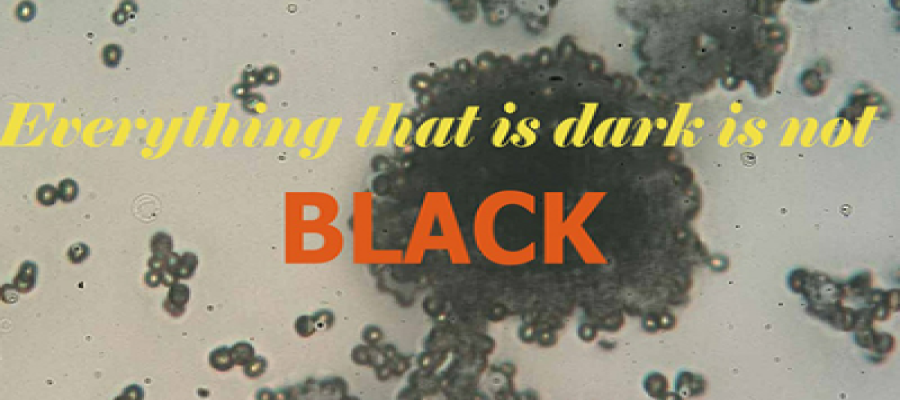Medical Examination for Sexual Assault: A Guide to Medical Practitioners
Sexual
assault is a deeply traumatic experience, and survivors often turn to medical
professionals for support and evidence collection in the aftermath. The medical
examination conducted in these cases plays a critical role in both the survivor’s
recovery and the pursuit of justice. This guide is meticulously designed to
serve as an essential tool for medical practitioners, providing a step-by-step
overview of the procedures involved in conducting a medical examination for
sexual assault.
Prioritizing
Sensitivity: A Trust-Building Foundation
· Establishing
Trust:
Initiate
the examination process by introducing yourself and clarifying your role.
Prioritize the survivor’s comfort and autonomy, ensuring transparent
communication about each step in the examination.
· Trauma-Informed
Care:
Acknowledge
and understand the potential impact of trauma on survivors. Utilize
non-triggering language, creating a calm and supportive environment. Empower
survivors by offering options and involving them in decision-making about their
care.
Initial
Assessment: Gathering Crucial Information
ǂ
Patient History:
Gather
a detailed medical and psychological history, demonstrating sensitivity and
empathy when inquiring about the details of the assault.
ǂ
Consent:
Transparently
explain the purpose of the examination and obtain informed consent. Address any
concerns the survivor may have, fostering open communication.
Thorough
Physical Examination: Identifying Signs of Trauma
o
Head-to-Toe Assessment:
Conduct
a comprehensive physical examination, paying special attention to areas
commonly affected during sexual assault, such as the genitals, breasts, and
face.
o
Genital Examination:
Employ
a standardized approach to examine the genital area, documenting injuries or
abnormalities. Collect samples for evidence preservation, including swabs for
DNA analysis.
o
STI Screening:
Perform
a detailed screening for sexually transmitted infections (STIs), providing
prophylactic treatment based on established protocols.
Evidence
Collection: Preserving Critical Information
§ Clothing
and Personal Belongings:
Secure
and label the survivor’s clothing and personal items for forensic analysis.
Document any visible stains, tears, or foreign materials.
§ Body
Fluids and Samples:
Collect
swabs from relevant body areas to capture potential DNA evidence. Preserve
samples in appropriate containers to maintain the chain of custody.
§ Photographic
Documentation:
Take
clear and detailed photographs of visible injuries or physical evidence,
following a standardized protocol for consistency.
Post-Examination
Care: Addressing Immediate Needs
»
Medical Treatment:
Address
immediate medical needs, such as treating injuries or providing emergency
contraception. Offer referrals for ongoing medical and psychological support.
»
Emotional Support:
Provide
survivors with resources for counseling and support groups. Emphasize the
importance of seeking emotional assistance in coping with trauma.
Collaboration
with Forensic Experts: Maximizing Expertise
Ä Forensic
Nurse Examiners:
Collaborate
with forensic nurse examiners, leveraging their specialized training in sexual
assault examinations. Seek guidance from forensic experts on evidence
collection and preservation.
Ä Law
Enforcement Coordination:
Establish
clear communication with law enforcement to ensure a seamless transfer of
evidence. Provide timely and accurate documentation for legal proceedings.
Visual
Tools for Guidance: Enhancing Communication
ð Timeline
of Evidence Collection:
Visualize
the chronological order of evidence collection, emphasizing the importance of
prompt action. Highlight key milestones like the initial assessment, physical
examination, and evidence preservation.
ð Anatomical
Diagrams:
Create
infographics illustrating areas commonly affected during sexual assault. Clear,
labeled diagrams aid practitioners in identifying and documenting injuries.
ð Checklist
for Comprehensive Examinations:
Develop
a concise checklist outlining essential steps, including patient history,
consent, physical examination, evidence collection, and post-examination care.
ð Communication
Tips with Survivors:
Design
a visual guide with bullet points on trauma-informed communication. Emphasize
the use of non-triggering language, maintaining sensitivity, and prioritizing
survivor autonomy.
ð Referral
Resources:
Provide
a list of resources for medical, psychological, and legal support. Include
contact information for counseling services, support groups, and legal advocacy
organizations.
Other
Considerations: Empowering a Survivor-centered Care
Ø Inclusivity
and Cultural Sensitivity:
Recognize
and respect diverse backgrounds and experiences. Tailor the examination process
to be culturally sensitive, considering factors such as religious beliefs,
language barriers, and cultural norms.
Ø Communication
Beyond the Examination:
Extend
communication strategies beyond the examination room. Maintain open lines of
communication with survivors post-examination, ensuring they are aware of
available resources and follow-up appointments. Provide guidelines on how to
sensitively discuss ongoing care and potential legal proceedings.
Ø Documentation
and Record-Keeping:
Emphasize
the importance of meticulous documentation. Detail-oriented record-keeping not
only aids in legal proceedings but also contributes to the survivor’s
comprehensive care. Follow templates or guidelines for documenting injuries,
evidence collection, and post-examination care to ensure consistency and
accuracy.
Ø Continued
Education and Training:
Acknowledge
that sexual assault examination protocols evolve. Participate in ongoing
education and training to stay abreast of the latest research, forensic
techniques, and trauma-informed practices. Facilitate a culture of continuous
learning within healthcare institutions.
Ø Self-Care
for Practitioners:
Address
the emotional toll that conducting sexual assault examinations may have on
healthcare professionals. Adhere to resources and guidance on self-care
strategies, emphasizing the importance of seeking support and recognizing signs
of burnout or vicarious trauma.
Ø Empowering
Survivors in Decision-Making:
Enhance
the understanding of trauma-informed approaches to decision-making. Facilitate
open dialogue with survivors, ensuring they are active participants in
determining the course of their care. Respect survivors’ choices and autonomy
throughout the entire process.
Ø Interdisciplinary
Collaboration:
Work
closely with social workers, mental health professionals, and legal experts to
provide comprehensive care. Foster a collaborative approach to address the
multifaceted needs of survivors beyond the immediate medical examination.
Ø Technology
and Telehealth Considerations:
Recognize
the role of technology in providing remote support and examinations. In
instances where in-person examinations may pose challenges, consider the use of
telehealth solutions while maintaining the utmost sensitivity and privacy. Follow
guidelines for ensuring secure and confidential virtual interactions.
Summary
In
cases of sexual assault, medical practitioners play a pivotal role in
supporting survivors and contributing to the pursuit of justice. A
well-executed medical examination not only ensures proper evidence collection
but also plays a crucial role in the survivor’s recovery process. This
comprehensive guide, crafted with sensitivity and a commitment to
trauma-informed care, serves as an indispensable tool for healthcare
professionals. The suggested visual aids, infographics, and bullet points
enhance communication, guiding practitioners through each crucial step. By
following this guide, medical practitioners can navigate the complexities of
sexual assault examinations with professionalism, empathy, and a focus on
survivor-centered care, fostering healing and empowerment.
Key
messages
ü Survivor-Centered
Care: Prioritize survivors’ autonomy, well-being, and choices throughout the
examination, fostering a safe and supportive environment.
ü Continuous
Education: Stay updated on evolving protocols, trauma-informed practices, and
interdisciplinary collaboration to provide the best possible care.
ü Compassion
and Self-Care: Acknowledge the emotional toll on practitioners, emphasizing
self-care and compassionate communication to support survivors effectively and
sustain a resilient healthcare community.
References
a. GUIDELINES
& PROTOCOLS Medico-legal care for survivors/victims of Sexual Violence.
Ministry of Health & Family Welfare, Govt. of India.
b. Manual
for Medical Examination Sexual Assault, Centre for Enquiry into Health and
Allied Themes, Mumbai, India.
How can medical practitioners promote cultural sensitivity during a sexual assault examination?
- Ignore cultural differences for objectivity
- Tailor the examination process to cultural norms
- Discourage communication about cultural beliefs
- Apply a one-size-fits-all approach to care
Image credit: Freepik



